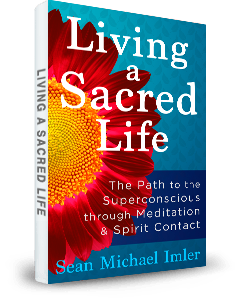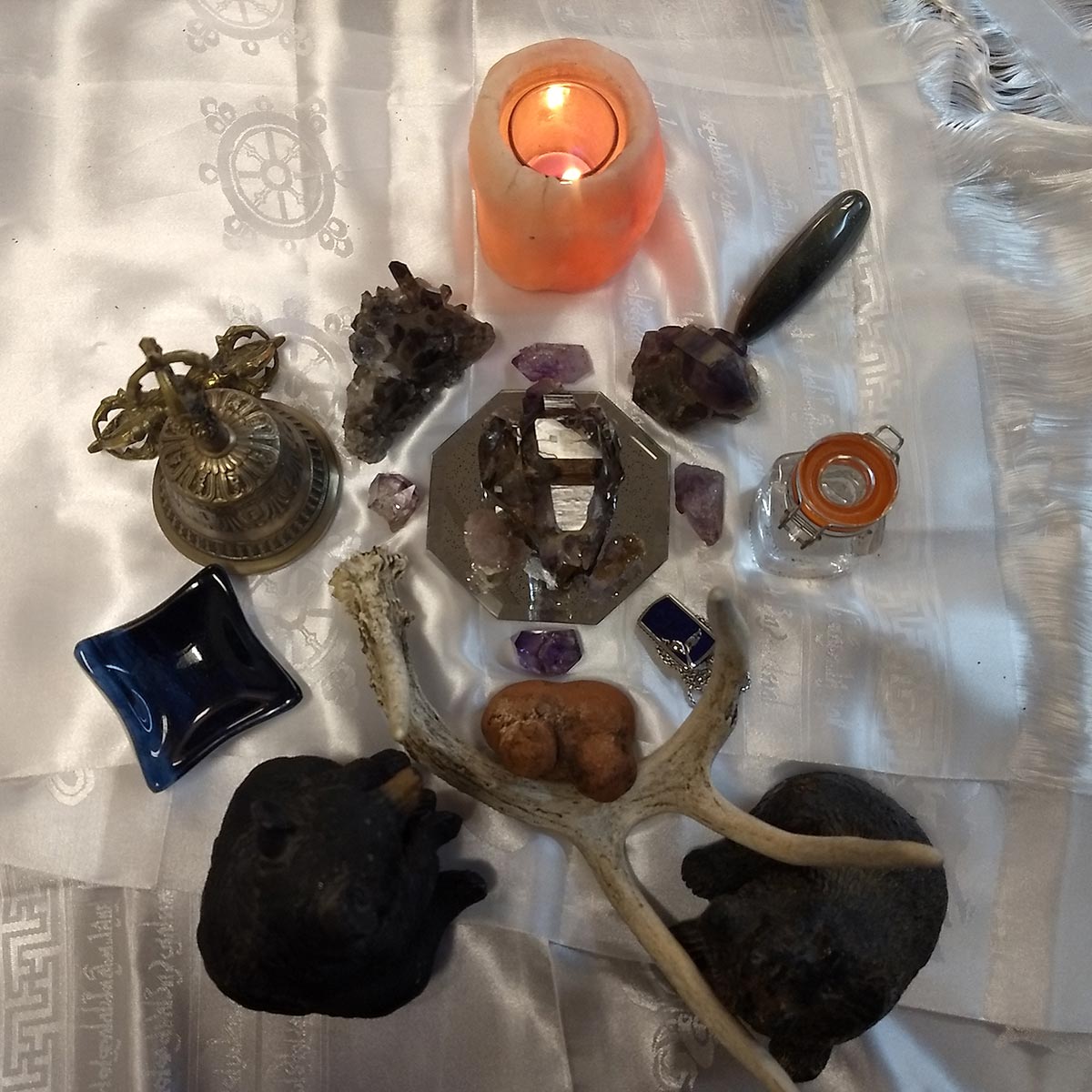Healing aftercare is necessary after we’ve seen a healing practitioner. During an appointment with a doctor, therapist, energy healer, psychologist, etc., we are given attention, direction, facilitation, tips and guidance. We’re encountering healing, though it’s important to note that the healing is coming from ourselves via the practitioner. What happens after the appointment is just as, if not more important than what happens during the session. What I want to focus on here are a few ideas to bring the healing home with us. Let’s start by looking at the problems we face.
Difficulties With Healing
People go to healing practitioners (including western medical doctors) and receive treatment for a malady or discomfort. After noticeable results, time goes by and the problem returns. I’ve seen this happen not only to clients that I’ve worked with, but in myself. Often what happens is that during a session, you experience an epiphany where you’re able to see the reason why your body-mind created the situation you’re in. It could be a childhood trauma, a relationship that’s going south, or even a boss that’s acting like a tyrant, manifesting as dis-ease or depression in you.
The word, “epiphany” is exceedingly important in healing. These realizations are the cornerstone of change. I’m including this definition to increase the gravity of why it’s to important.
- epiphany – /iˈpifənē/
- Noun
1. A sudden manifestation of the essence or meaning of something..
2. A comprehension or perception of reality by means of a sudden intuitive realization.
- Synonyms
flash – insight – inspiration – oracle – realization – vision
Epiphanies can happen in highly unusual places, like standing in the checkout line at the super market or even driving home from work. They’re more likely to occur with a therapist when in deep conversation, or with a healing practitioner when energy is being shifted. Examples may be about why you exhibit a particular behaviour around a partner or co-worker, or what the emotional relationship between dis-ease childhood trauma. Often, you experience a rush of energy moving throughout the body or into the head, and it feels like you just woke from a dream.
During the epiphany, you believe that acknowledging the situation is enough to never return to your current state because you understand why a part of you was sick in the first place, and the healing begins? Then, some time down the road, you have recurring symptoms and you relive the malady all over again. Maybe it doesn’t recur to the same degree and the followup treatments are fewer. At times, it returns with a vengeance and is debilitating.
Something else that happens is the “sun tan” effect. This is when you go to a workshop and the speaker is so engaging and the content so striking that it seems like you’ve been illuminated. You walk away with the instant sun tan and you consider the experience to be life changing. Then, some time soon, you’re right back where you started, wondering how you lost the grains of wisdom that promised to change your life forever. In fact, you may even beat yourself up for forgetting them.
What Makes it Difficult
The reasons these situation occur are varied and I want to explore them a little. Earlier this year, I was attending a founder’s session with the creator of BodyTalk, John Veltheim. This was one of the events where John “puts the gloves on” and does healing sessions in a classroom format. He’s generally lecturing around the world or busy writing, so this is a rare opportunity. In between treatments, the topic at hand was one he spoke of quite a bit. One theory he has which I feel holds a lot of weight is that the heart itself may not be in a position to receive the healing and fully integrate it.
First, you have to understand that the heart-mind is the source of our spirit’s manifestation into matter. If the brain were the CPU of our system, the heart would be the power supply. When the heart stops, everything stops. But, it’s also where our wisdom is stored from lifetime to lifetime. We draw upon its ability to connect to others via compassion. We consult it to make the right decision during important moments, even defying the brain and its ability to logically assess the world around us. When we’re truly connected to spirit, creator or God, it’s thru the heart, not the brain. This point we’ll touch on later. So, when John was talking about not being able to truly be cured of something, his explanation is that the physical heart is somehow distorted, either in position, size, torque, or other functional impairment. The beauty of BodyTalk is that we can alter these things, but it’s not without difficulty. A practitioner has to have a good understanding of heart function, not to mention the ability to “see” the heart to understand its impairment.
Another reason why a healing may not stick comes up with mental/emotional problems. For change in the body-mind (meaning, the whole of a person mentally, emotionally and physically), to take place, the body-mind needs to express itself in the outer world thru the medium of consciousness. When a true healing takes place, the world around a person is altered to reflect the change within because our outer world is a manifestation of our inner world. After the healing, adjustments need to take place in the outer world for the healing to fulfill its mission. This can be as simple as driving a different route to work that takes a little longer but creates less stress. It can also mean huge changes like the ending of a marriage, changing of career, or moving to a different city. These things can be necessary to allow the spirit to truly express itself and help facilitate the change in the body-mind. If this can happen, a profound healing can take place; the kind that we might call, “cure.”
If a person is unwilling to make the changes necessary in their lives to allow the spirit to act in the way it needs to, we can relive our sickness or malady over and over. Sometimes, it can be another person or group that’s close to us that feeds the malady. For example; family members can hold us in unhealthy patterns because they “see” us in a particular way. That could be as lazy, ineffectual, habitual, angry, untrustworthy; the list goes on. The point is that the energy they put into their opinion can have you fixed into form. The way you look, the way you act and react, the way you respond, right down to what you’ll think in a situation is all pre-supposed. If you, on the other hand want to change and be a different person, their fixation on you can be a huge barrier to your healing, especially if it’s more than one person. The truth is that you’re creating the whole situation from your subconscious, but that’s another topic. But it shows the power of the subconscious to hold onto what it knows. It recreates the same situation over and over, perpetuating the results of childhood traumas and memories, doing what it does best which is, working from patterns.
What Choices Do We Have?
We are intelligent creatures, and the intellect can be used to perform amazing things from building bridges, to designing minute circuitry, to powering an orbital satellite. It reasons and can write complex symphonies and stirring oratories. The dark side is that it can also act as a jail to our dreams and desires, telling us that we don’t have a particular skill or will never amount to anything; stories that we may have heard as children from our parents or our peers. We have to be able to get out of the brain and into the body to fully realize our healing. It’s not enough to “understand” the epiphanies that occur during a healing session with a practitioner, or during one of those emotional breakdowns when a heavy realization takes place. We need to take those precious moments and hold onto them for as long as we can. We need time to get the brain to rewire its mental circuitry which happens thru repetition. We need to embody the information. The definition of embody is a great one to use as an example:
- embody – /emˈbädē/
- Verb
1. Be an expression of or give a tangible or visible form to (an idea, quality, or feeling).
2. Provide (a spirit) with a physical form.
- Synonyms
incarnate – personify – incorporate – impersonate
Embodying Our Healing
- Imagery is a very important tool for re-stimulating the memory of an epiphany. A good analogy for an epiphany is a lightbulb being turned on, casting light on the darkness of a black room. What’s in that room? See the objects, the arrangement of things, and the colours. Each time you want to recall the epiphany, remember the room and let it’s memory move throughout your body. Another analogy might be that awareness is being uplifted out of confusion like an eagle flying high above a tumultuous storm. See the details of the eagle, the ferocity of the storm, and possibly the details in the land below. Another may be freedom from chaos, like a person walking away unscathed from a race car accident. What was the car like before and after the accident? What was the driver wearing? You can come up with your own visualization, but these are simple examples that you can use to relive the epiphany.Once you decide upon the imagery, learn to feel the experience. It’s similar to remembering a dream. There are objects, colours, sounds, and especially, emotions that trigger the memory of that dream. You need to record this experience and associate it with the epiphany. How does it feel to experience one of the things described above? Get it into your body. Don’t just have the mental pictures, but let yourself feel how amazing it would be to have an answer to why you may have manifested cancer in your body, just like you would feel if you had a winning lottery ticket. Feel it! Let the whole body experience it. This takes practice but the rewards are twofold because not only will it stimulate the memory but also get your whole being involved in your mental processes. The body’s memory is much stronger than the brain’s so engage it.
- When you’re having an epiphany, write it down. Many people are not writers because they don’t feel like they have eloquent writing skills. It doesn’t matter. Journal your epiphany. It’s very important to do this with a pencil and paper. Many people like to use the computer to write. I know, I’m one. I love being able to get my thoughts out quickly, and if you’re one of these people, I understand. However, there’s something viscerally tangible to having a pencil and using handwriting to express yourself. I believe the reason for this is that we learned to write in school at a young age when the brain was forming all of it’s patterns, based on external stimulation. We equate learning with writing at a fundamental level. An epiphany is a learning, a seeing with new eyes. When you take a pencil and write down this new information, the brain is already wired to lodge this information into memory and put a certain amount of importance on it. Also vitally important is the fact that you’re using a physical tool like a pencil, via your arm and hand. Meaning that the brain is sending signals out of itself and into the physical. This is exactly what we want to happen, to get the thoughts out of the head and into the body where they can be stored in the body for later recall. When we reread our thoughts on paper, we have the words that were crafted by our own minds so they will be easily understood, conjouring up these memories with our physical memory. If you need to, rewrite it. This will help to further embed the experience. When you reread it, let the details pour over you. Become immersed in them. This will help the brain rewire itself.
- Ask for spirit’s, creator’s or God’s help. This is a very important part of Sandra Ingerman’s soul retrieval process. If you want to learn more about soul retrieval, read my overview of shamanism. What I learned from Sandra is that it’s not enough to just call those soul parts back. They’re a living part of you that’s been gone for a long time. You need to accommodate them, find out what they need to fully express themselves in you. You do this by communing with them. Ask a spirit helper, your guardian angel, or God to help facilitate the conversation between your epiphany and your heart-mind to learn what you need to do to fully integrate your new awareness into you. No matter how peculiar the direction might seem, follow it. Journal the information and don’t rely on your brain to “remember” it. You’ll want to refer back to it. The important thing is in the doing. You need to get the information into the physical world by making whatever changes necessary for your inner self to manifest into the outer self. You’ll never be asked more of you than you’re able to provide. God never gives lessons that you’re not able to learn and never gives you more than you can handle. Repeat whatever direction you get as often as is necessary to stimulate the changes from within and manifest them into outer form.
These are a few examples of the importance of healing aftercare. Healing doesn’t stop happening when you leave the therapist, doctor, or healer. It continues into your everyday life as you walk away with the experience, awareness, herbs, medications, or shifts in your energy. It’s up to you to facilitate it taking hold and integrating it into your world. If you’re given “homework” by your therapist or healing practitioner, do it. It’s your commitment to your healing that will make it so. Don’t rely on the practitioner to do your healing for you because they can’t. They can only light the way. All healing comes from within.












